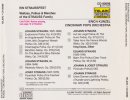Coming in late but here's my take / opinion:
For real fidelity you want a system that can play flat down to 20hz in-room. This is not necessarily flat anechoic, but you need something going on down to 20hz. It should keep up with whatever listening level you prefer. 93-100dB is probably more than enough for most people with neighbors they'd like to stay friends with. EQ is a must to deal with room modes in any case.
Even if the music you listen to "doesn't have anything" below 40hz, it *should*. To produce a perfect transient, you need energy at all frequencies. This applies to any sharp transient including cymbal strikes.
Now, you don't really hear the low bass in a cymbal strike, but percussion of all kinds theoretically benefits from as much bass as you can get. This is immediately noticeable if you have good subs plays low drums that haven't been highpassed in the recording. In my opinion this obviates any arguments about the lowest notes a piano, bass guitar, or organ plays.
Personally I don't perceive much "sound" below 20hz so going to 16 seems iffy to me. With my LCD-XCs if I play a 16hz tone I just get the sense that my house is shaking, or a whooshing in my ears, but definitely not a tone. Keep in mind those 4hz are almost half an octave down there, so it's a big difference in pitch if not absolute frequency.
For real fidelity you want a system that can play flat down to 20hz in-room. This is not necessarily flat anechoic, but you need something going on down to 20hz. It should keep up with whatever listening level you prefer. 93-100dB is probably more than enough for most people with neighbors they'd like to stay friends with. EQ is a must to deal with room modes in any case.
Even if the music you listen to "doesn't have anything" below 40hz, it *should*. To produce a perfect transient, you need energy at all frequencies. This applies to any sharp transient including cymbal strikes.
Now, you don't really hear the low bass in a cymbal strike, but percussion of all kinds theoretically benefits from as much bass as you can get. This is immediately noticeable if you have good subs plays low drums that haven't been highpassed in the recording. In my opinion this obviates any arguments about the lowest notes a piano, bass guitar, or organ plays.
Personally I don't perceive much "sound" below 20hz so going to 16 seems iffy to me. With my LCD-XCs if I play a 16hz tone I just get the sense that my house is shaking, or a whooshing in my ears, but definitely not a tone. Keep in mind those 4hz are almost half an octave down there, so it's a big difference in pitch if not absolute frequency.


